WATCH TODAY'S VIDEO

“Photography is a way of feeling, of touching, of loving. … It remembers little things, long after you have forgotten everything.”
Aaron Siskind
The quote above is my all time favourite photography quote. I remember when I read it for the first time, I thought to myself - This! This describes EXACTLY why I do what I do!
I think especially for us parents, when our subjects are people we care so deeply about, the possibility of having something that freezes those moments, that happiness, those heart melting smiles is just irresistible.

But sometimes, we go about it all wrong. We tell our children to stand and smile sweetly where what we really want is to capture the true joy behind the smiles they spontaneously give us. Except no faked smile can ever live up to the real thing. So today, in our last lesson of the week, we will try to make our kids laugh and then to capture those smiles.
What makes children laugh?
What makes your children laugh? Do your kids, like mine, love a good potty joke? Or cannot resist a good tickle game?
Different children, different ages laugh at different things. YOU know your children best and what makes them tick, but the key is to be a part of it. Did you know that as humans, we only tend to laugh out loud when we have someone to laugh FOR? In solitude, we might crack a smile, but there will be no belly laughs unless there is a connections with someone else. So, YOU need to be in on the act. Be the clown, the comedian and the object of ridicule all in one.
Fake smiles vs real laughs
Let's talk about body language for a moment. A true genuine smile goes way beyond the mouth. The whole face radiates, the eyes narrow in pleasure, head tilts backwards, eye contact is often gone as the child is immersed in the delight of the moment, mouth open. The body is in motion - head shakes, shoulders relax, sometimes the arms involuntarily go up. YOU KNOW when you see a real smile.
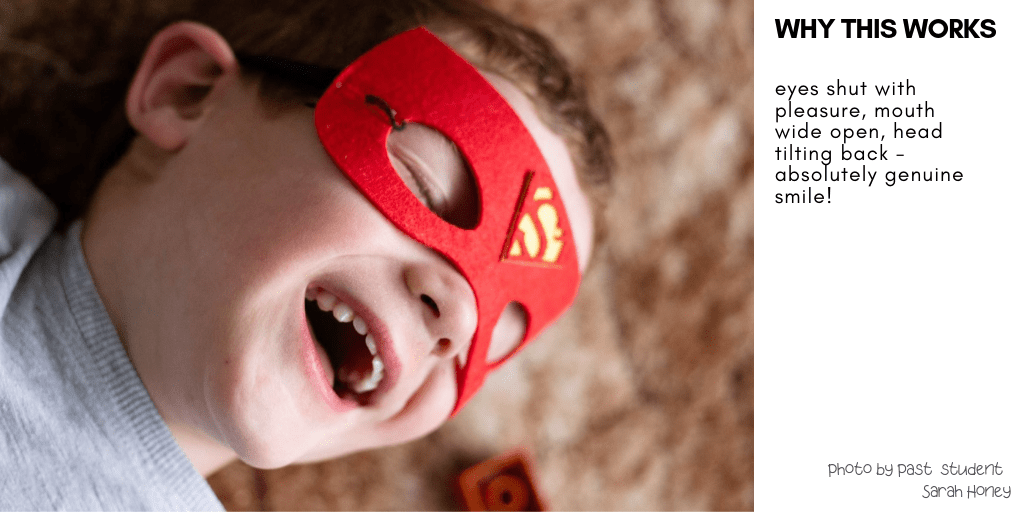
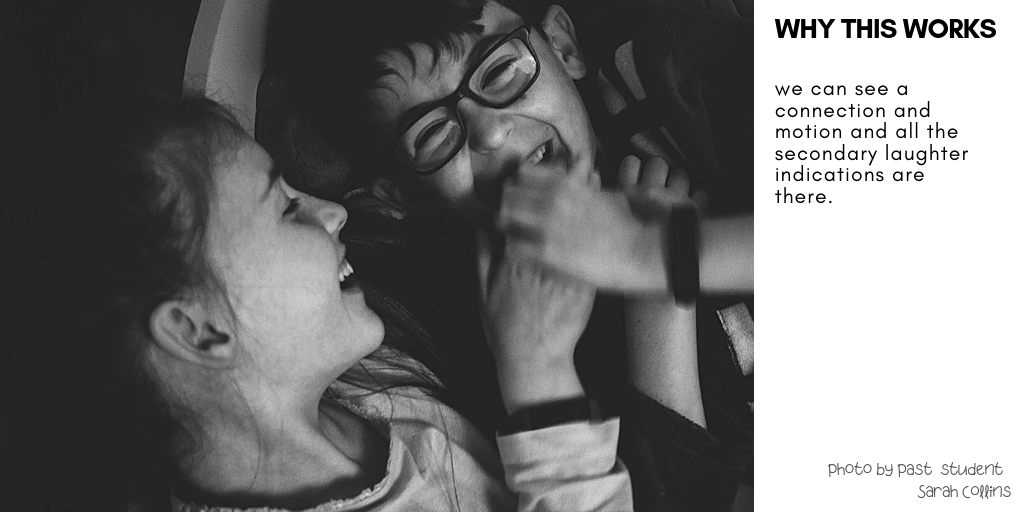
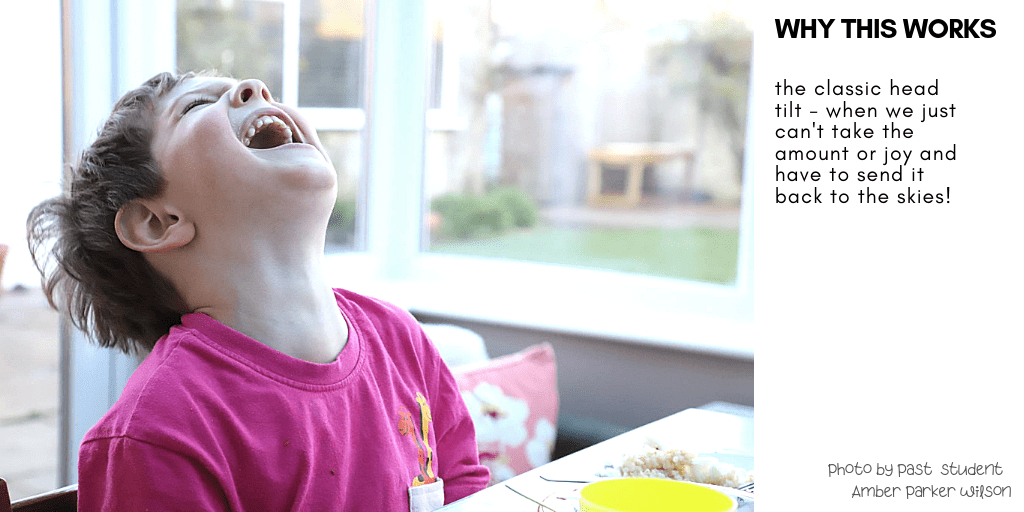

What we're trying to achieve today is to really highlight that smile, make it the hero, the key feature of the image, rather than an expression that your child happens to have.
The key thing when it comes to composing your photos - any photos - is that when someone picks it up, they should instantly be able to tell what it's about. The viewer's eye needs to quickly identify what it needs to see and and settle there rather than wandering around the frame.
In order to achieve that, photographers like to isolate the subject and draw the eye to it as much as they can and they do so using a few different strategies.

a) sharp vs blurry / light vs dark / strong subject vs blank space
Those three are different ways of addressing the same principle - that the viewer's eye should notice one thing and disregard the rest
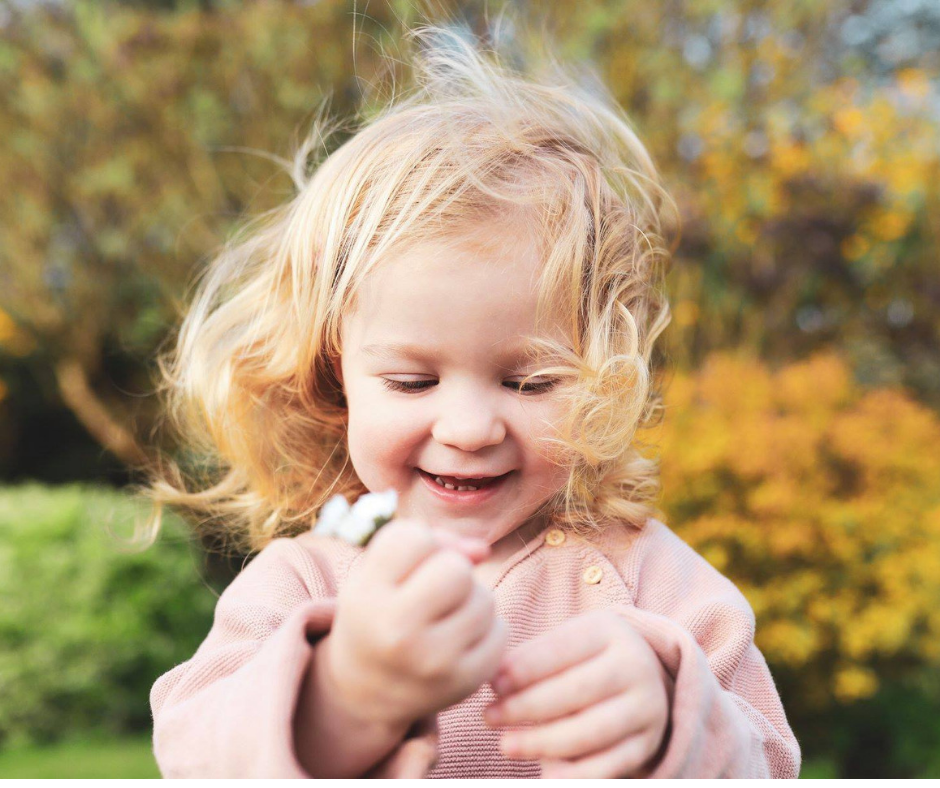
By making the photo background blurry, you force the viewer's eye to go to what's sharp. Our eyes are not designed to linger on blurry parts long so we are always drawn to what's sharp
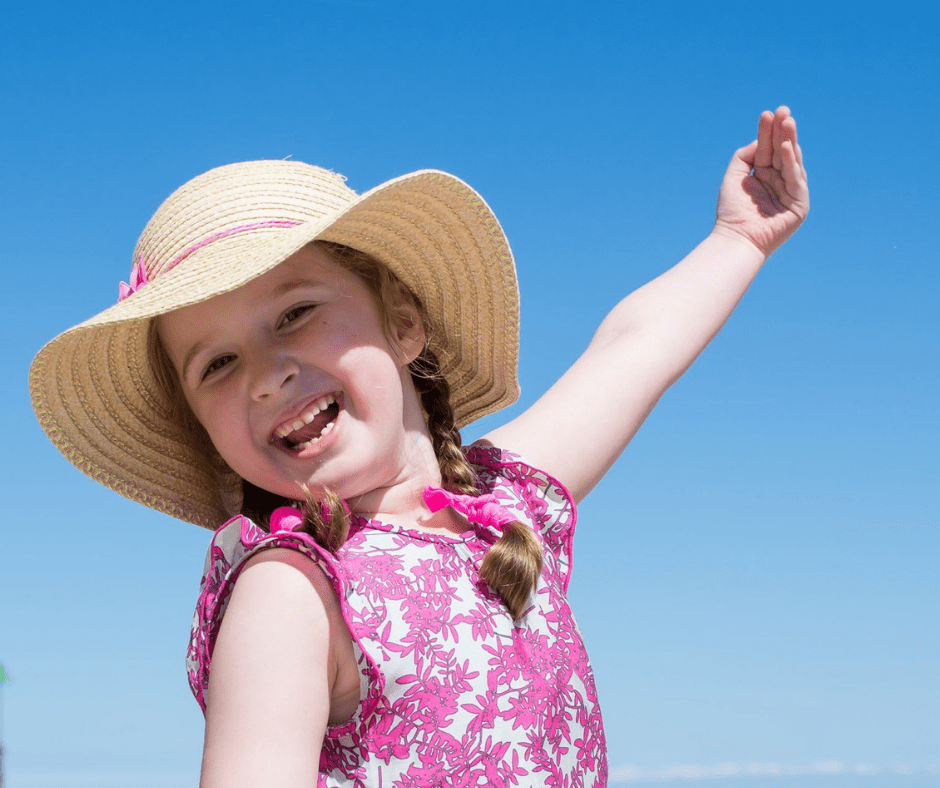
By making the background relatively blank ( as in single colour and without a strong pattern or other elements which could be drawing the attention to it), you make the eye disregard it as a key composition element and go straight to your subject
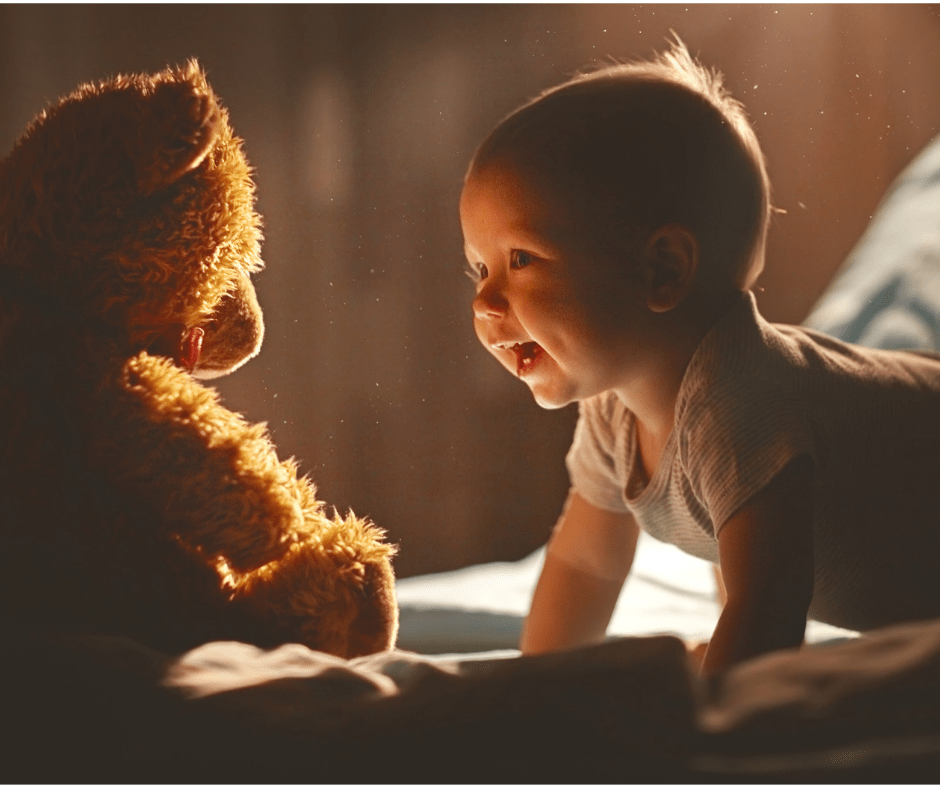
By letting the light highlight your chosen detail and the rest fall into the shadows, you draw the attention to the bright part again as our eyes always go to what's bright in an image.

Sometimes there is just too much going on for us to focus on the smile. Every image tells a story and if you want yours to be about the smile and NOT what they;re wearing or where they are or anything else that might be going on there, you need to remove the extra bits and bring the focus back on the smile. Here again, you have a few different options
a) crop tight - fill the frame
This is often the first thing we hear when we start learning photography - keep things simple and fill trat frame. This means not much else will make it into the picture, thus placing all the attention on your subject.
A couple of notes on this: although you will be tempted to do this by just getting very close to your subject - don't. If you do that, you're likely to distort your child's face. It's much better to gat a little further and zoom in. Here is a full explanation why that is in an article from our blog.
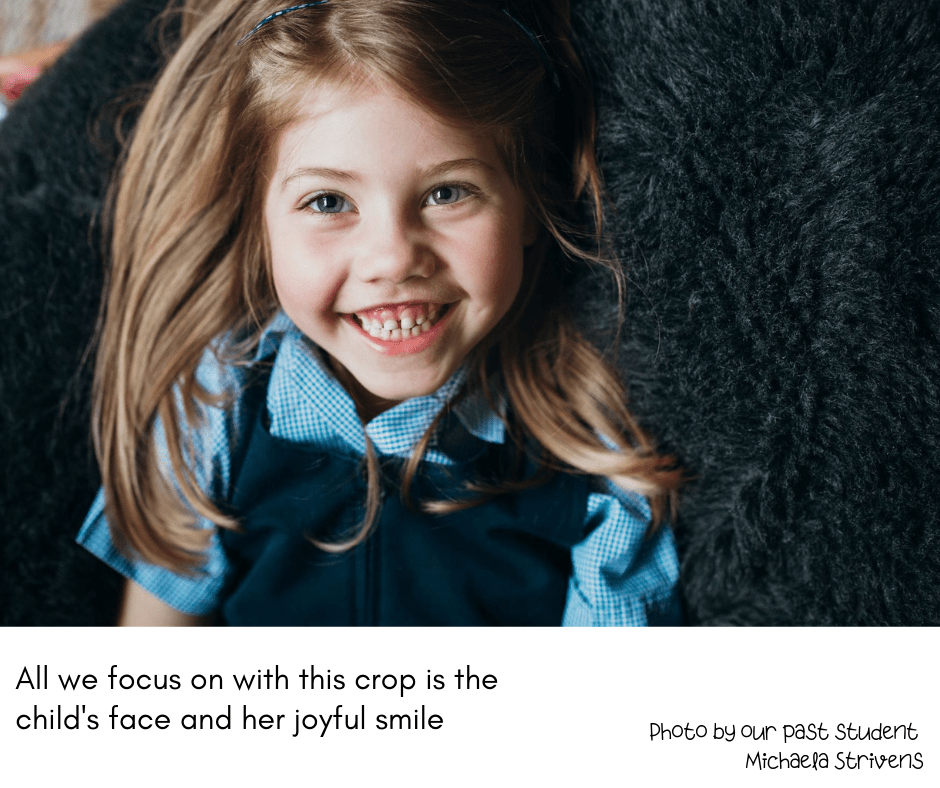
b) remove colour distraction
We're going to be dealing with colour and what it means for your joyful photos later in this course, but sometimes, stripping your image of colour and bringing it down to black and white works wonders when it comes to highlighting that smile. It forces us to concentrate on the expression and nothing else. It works particularily well when you're dealing with an environment with lots of colours which are likely to distract from your subject, but it can work in a simple environment too when the smile is what you want to highlight
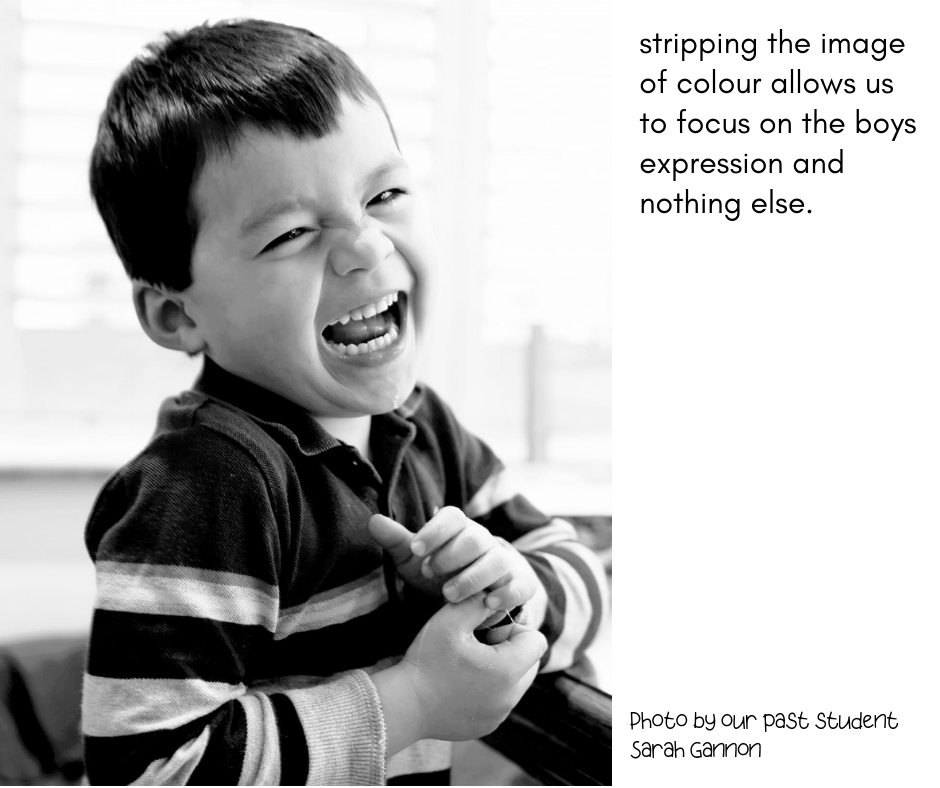
3. Hide the smile - sort of..
Did you know, sometimes, hiding a part of your subject or even hiding it completely but hinting at it can INCREASE the interest in it? Our brains are designed to fill in the blanks so having a bit of the image 'missing' can actively engage the viewer's brain and make them pay attention more.
One example of that is a creative crop where we actually cut into the face. Even though we don;t see the whole face, we still completely 'get' it.
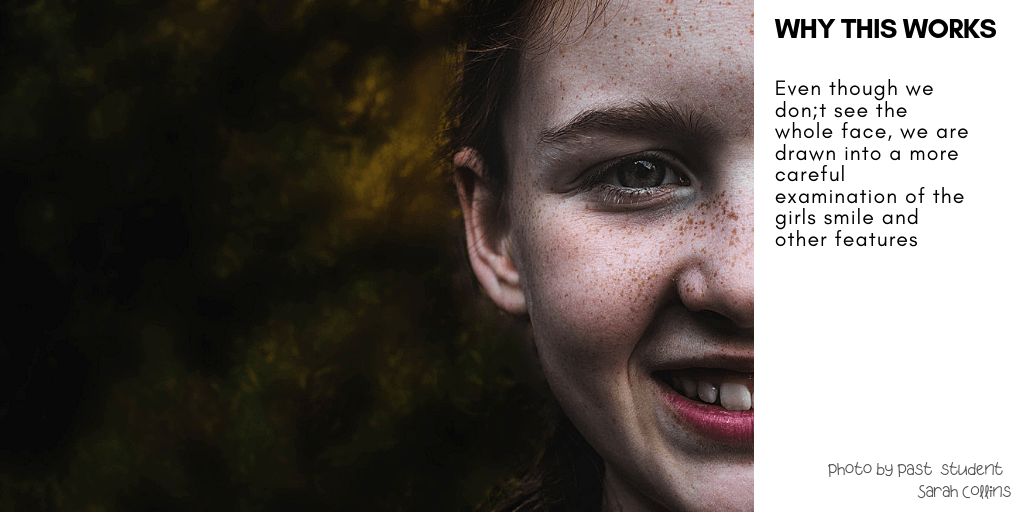
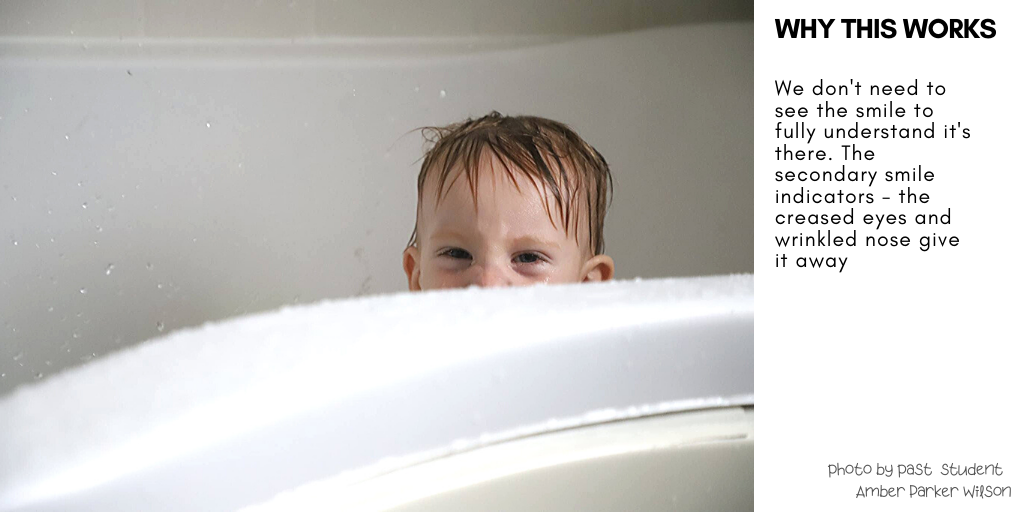
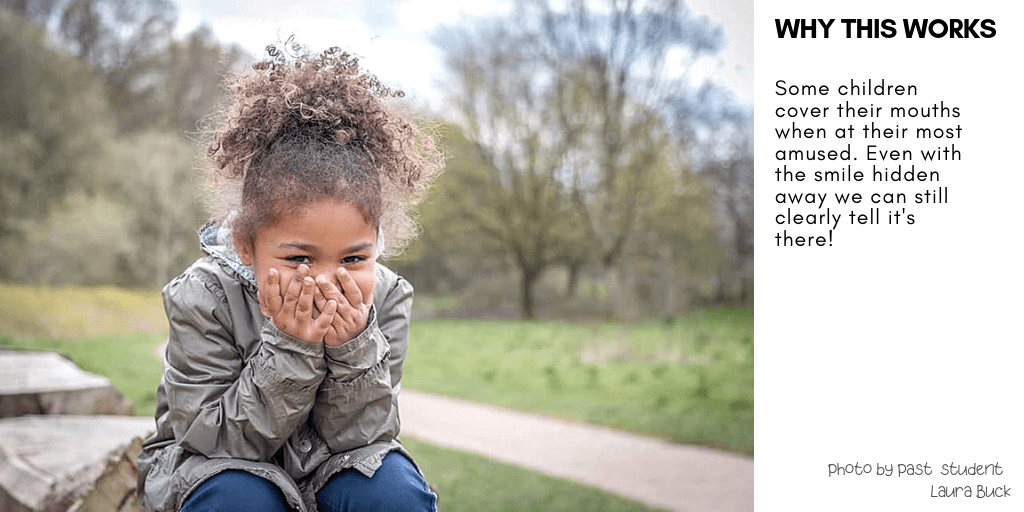
TECHNICAL CONSIDERATIONS
Camera Settings
Since a happy body is rarely a static body, it's easy to end up with a blurry photo - either because they were moving too fast for your camera, or because the focus was missed as they shifted position.
Solution - make sure your camera is set up for speed.
Even if they're not going anywhere, the involuntary movement involved in laughter - head shaking, arms flapping, head tilting - they'll all show up as blur if you're not fast enough.
- If you're shooting in manual or semi-automatic ( priority modes) and you can control the shutter speed of your camera, make sure it's fast - at least 1/125s , ideally 1/250s upwards to capture the movement.
- If you're shooting in auto mode or on a point and shoot - pick a sports setting - it expects there will be fast movement and it's set up for it better. It might not be foolproof as you only really are in control of your camera if you can set these settings by yourself, but if you're not sure what you're doing, I wouldn't recommend faffing with your settings today - you want to focus on the fun! ( I would recommend joining one of our courses to learn how to manage your camera)
Pro Tip 1: your camera will register movement as faster the closer it is to the subject. So if you're planning on getting close ( and you will for this exercise) - you need to make sure your camera is definitely fast enough. When you are far from your subject ( or even far-ish) you have a greater margin of flexibility.
Pro Tip 2 : Make sure that you and the kids are somewhere with lots of light - you will make it so much easier on yourself if you don't have to fight with poor light. Outdoors, or in a well lit room is best. Poor light forces your camera to shoot slower ( it's not about how fast you can press the shutter button but how long it takes your camera to get enough light in to take a good photo) and when your camera takes its sweet time to take a photo, you are running a high risk of ending up with a blurry image.

WHAT MAKES KIDS LAUGH
a totally incomplete list to get your mind going. What makes YOUR kids smile?

BABIES
- Babies can be a tough crowd at times. You'll be standing there, giving them your best funny face and nothing. Nada. Tumbleweed. But then they'll be laughing like a maniac at their own toes. Go figure.
- But, some things are relatively foolproof strategies - mostly to do with impermanence of objects ( aka things disappearing and then reappearing) - ALL variations of peekaboo and hiding games. Also big hit - things falling down, off places - sometimes something as simple as dropping your keys will get the best laugh. Babies look for your reaction to those changes too and they read and mimic your expressions so if that ball dropping to the floor gets a big reaction from you, chances are, it might do the same from your baby.
- Physical sensations - things that tickle their skin - anything from your touch to feathers, the cat's tail, water or sand. If you can work it into a little game ( incy wincy spider?) that's even better.
- Babies love repetition - if you found something that works, don't be afraid to do it over and over. And over. And over again.
- Babies also love the same physical sensations which make older children laugh - being thrown up in the air, flown like an airplane, jiggled on a parent's lapetc
- Top tip - get someone to help make your baby laugh and keep them safe while you're manning the camera.

TODDLERS
- Basically tiny comediens. They can laugh at a puddle and will spend hours repeating the same one thing that they realised gets a reaction out of you laughing hysterically while you do that.
- Whether they're already verbal or not quite yet, toddlers are BIG on physical comedy - the more exaggerated the better. Anything involving a game of chase, tickle, ideally ending with a cuddle or trying to topple mum / dad over is ALWAYS a hit. I have a little trick which has so far never failed me with toddler - trying to get them to give me a high five and then pretend falling over from the 'force' of the high five. Something about having the illusion of temporarily winning at something over mum / dad that just makes them break out into smiles.
- Anything to do with speed really - swings, roundabouts, being thrown or flown in the air - never fails!
- But, closer to home - a game of tickle with mum or doing 'silly' things with parents - smearing cake on their nose, wearing pants on your head, being allowed to get a bit dirty or splash in a puddle - all good strategies to get them going.
- Unless they decided on the whim they just don't want to. A toddler's will is the strongest material known to man. They should have made Captain America's shield out of that stuff. If they flex that stuff, just roll with it...

PRESCHOOL AND EARLY SCHOOL
- Preschoolers are like toddlers who have grown bargaining skills. Everything that applies to toddlers still applies to preschoolers.
- PLUS toilet humour. OMG, poo, stinky bums, smelly feet, boogers and snot. Comedy gold.
- Do you know how to make a child look like they absolutely love their new baby brother / sister? Tell them to smell their head and as they do, make a fart noise. as far as photos go this equals a tender moment of closeness followed by beautiful laughs.
- That age kids have a super sensitive silly radar - if there is a chance of getting them into a game that is likely to turn out a little naughty or funny - that's their jam!
- But also - imaginative play - costumes and games and chases and races. You can get your little superheros to come out of their shells

OLDER KIDS
- This thing gets tougher as they get older. As they grow older they develop more self consciousness in front of the camera and can actually be a bit timid especially when it comes to showing their emotions.
- They may be reluctant to even be in front of the camera . They like to feel like they're treated as if they're older than they really are
- But guess what, they still like to be silly, and a little naughty, and they love making other laugh ( as long as they don't feel like you're laughing AT them.
Day 5 challenge
YOUR TASK FOR TODAY : make them smile
YOUR challenge today is about capturing genuine smiles. I want you to make your children laugh and capture those laughs. Simple as that!
Try applying one of our suggestions for highlighting the smiles - making them stand out, removing distractions, hiding them etc - BUT if you can give me a completely and totally technically imperfect image of a genuine smile - none of the above will matter. Show me those belly laughs!
